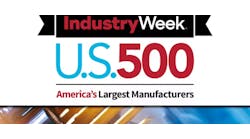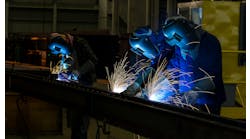Question: We don’t really have an incentive to improve although we have a lot of opportunity. We own a good chunk of the market, we aren’t losing market share and we’re profitable (although not as much as we could be). How do I light a fire under the workforce without a burning platform?
Answer: This is an easy one. Two immediate actions are required:
1. Look in the mirror at a leader whose expectations aren’t nearly high enough.
2. START A FIRE!
The way this question is worded is a sure “tell” that the awareness is already there that this kind of thinking and behavior is not acceptable, i.e., with phrases such as “although we have a lot of opportunity” and “although not as much as we could be.”
Remember, continuous improvement (CI), by whatever name, is a career-long commitment to improve one day at a time forever. If this “We’re No. 1” kind of mindset becomes pervasive throughout the company, there is already big trouble on the horizon. It’s only a question of time until complacency sets in.
Unless your company is improving at a rate faster than your best competitor, serious issues will begin to surface. It might take a decade for your competition to go flying by, but a committed team that is thinking and behaving the right way, making improvements every day, will ultimately get it done.
I don’t know at what level in the organization the reader is operating. But I don’t need to reinvent the wheel about the importance of each person in the business taking initiative to apply lean thinking every day, regardless of their position in their company. Here’s some sage advice from a fellow IndustryWeek columnist, Jamie Flinchbaugh.
OK, now that we’ve got our head on the right place, go ahead. START A FIRE!
In both businesses I was part of as the senior manufacturing executive, scrap improvement was the No. 1 opportunity to improve costs. It was difficult to break old paradigms and get the organizations to grasp the magnitude of the growing competitive issues. The first was in the early 1990s at Belden and the second in the late 1990s at General Cable. The accounting wasn’t nearly granular enough in either company. Lots of soft infrastructure work was necessary to collect and report actionable data.
In the case of General Cable, process scrap numbers were understated because the former operating executives had included the metals reclaim dollars as a net against the gross scrap from operations. This kind of reporting resulted in a lower overall scrap number and understated the actual cost of the products. (The products had a range of metal content anywhere from less than 20% to as much as 70% of the product costs.) This was an important financial transaction for the accounting department due to the multimillions of dollars received from metal reclaimers over the years. From a manufacturing operations perspective this was a paradigm that would be smashed by elevating expectations with a bold objective on scrap reduction.
In both businesses I set the objective to reduce scrap by 50%, all plants, in three years. I guarantee you, this STARTED A FIRE! Yes, it was arbitrary. Yes, there were gripes about the boss being unreasonable (or worse). Yes, some feared they simply weren’t capable of doing it. But, with the VPs of manufacturing aligned and ready to take on the challenge, we went forward with high commitment, high energy and high urgency to meet the goal.
This bold objective forced plant managers to think differently about this enormous waste they were walking past every day. They could no longer pick around the edges looking for incremental improvements and expect to meet this bold objective. They had to do a deep dive into the data and focus on the significant few; mobilize corrective action teams; find root causes and improve processes. It forced them to use better process knowing full well that “the old way” of attacking scrap would not get the job done.
In the end, both businesses accomplished the three-year objective and made huge positive contributions to earnings. The same was true of cash flow. Why? Because WIP inventory was no longer stuck in the process for extended periods due to high rejections and rework; and FG safety stocks could be reduced because of the much higher reliability of the shop floor. And of course, the on-time deliveries to customers improved from the low to mid 80s into the mid and upper 90s.
So, with the mindset of higher expectations now in place, what is scrap now as a percent of cost of production? How much scrap is due to work-in-process that is “outside of specification limits,” e.g., material fails, electricals, dimensions, physicals, etc.
Nearly every factory I’ve ever been in knows their process rejections, scrap rates and the dollars it costs the company. They know the scrap and rework costs relative to budget performance. While operating to budget performance seems to satisfy in the moment, it also tends to turn off our brains; it can create a malaise amongst both leaders and hourly associates where we stop looking for ways to get better because we’re favorable to the budget. There is always room to improve rework and scrap, and every dollar saved here goes right to the bottom line. I’ve never been in a plant where there were zero process failures and no material to be reworked or rerun.
Very simply, the mindset for CI never changes based on a budget. We’re still looking for opportunities to get better every day. We mine the data that we have or we go get the data that we need. We do Pareto analyses to focus our improvement efforts based on the biggest opportunities, and the plant accountant keeps the score so we know if we’re winning or losing.
Finally, along this three-year journey of huge scrap reductions, leadership will have established a different way of thinking, a different way of behaving, a different way of using the tools to focus on the most important things first. We will also have a different style of engaging the hourly workforce in improving their processes, helping to eliminate all the reasons why the machine operators have a bad day, and establishing a new level of trust and respect across the plant.
Sustain this kind of leadership, improved execution and holistic thinking by all, and you will be sustaining a culture of winning. If you do this both individually and as a group, your best competitor will never get close enough to see your tail lights.
Larry Fast is founder and president of Pathways to Manufacturing Excellence and a veteran of 35 years in the wire and cable industry. He is the author of The 12 Principles of Manufacturing Excellence: A Leader's Guide to Achieving and Sustaining Excellence.



